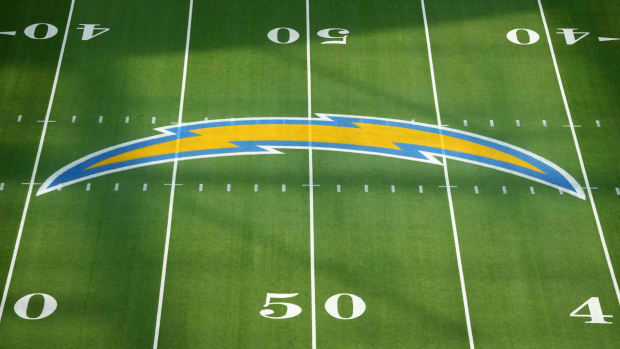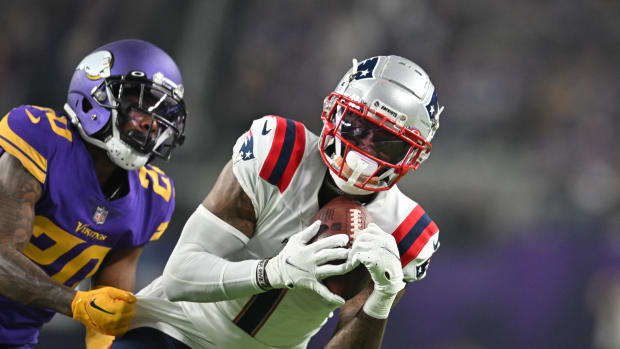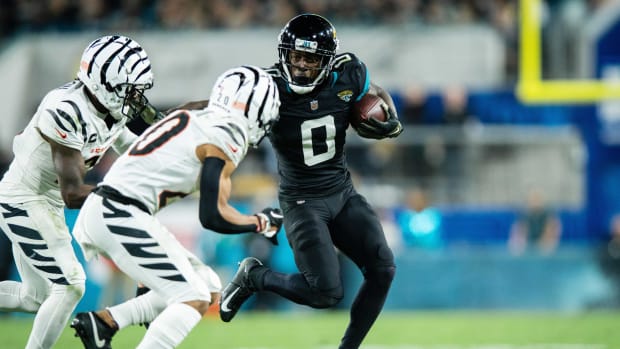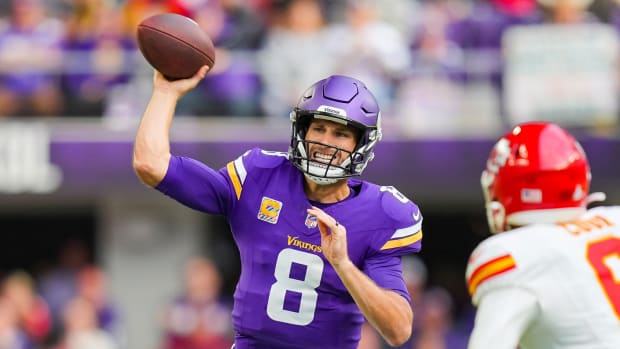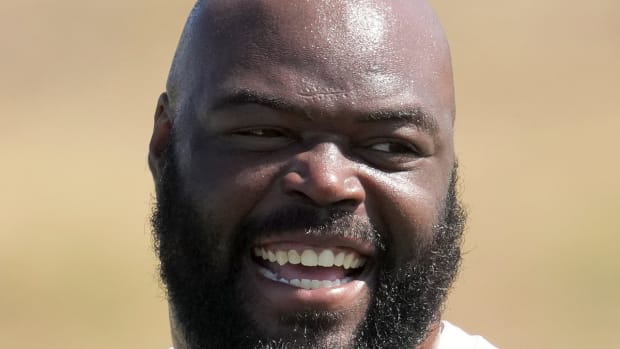Terrell Owens’ Sharpie
The MMQB presents NFL 95, a special project running through mid-July detailing 95 artifacts that tell the story of the NFL, as the league prepares to enter its 95th season. See the entire series here.
No matter the team, no matter the opponent, Terrell Owens always was confident in his capabilities as a game-changer. This is the man, after all, who professed: “I love me some me.” But tucking a Sharpie into his sock in case he scores, then having the audacity to whip it out after a touchdown, sign a football and hand it to his financial advisor sitting in a field-level box? That’s brazen, bold—and ultimately became signature Owens.
The incident, which occurred in a 2002 Monday Night game between Owens’ 49ers and the Seahawks, ignited the debate on whether touchdown celebrations are creative and harmless or a poor display of sportsmanship.
Owens, of course, wasn’t the first player to exercise flare after a score. Elmo Wright, a University of Houston receiver who played five seasons in the NFL from 1971 to ’75, is widely considered the father of the end zone dance, wideout and return man Billy "White Shoes" Johnson became its most famous early practitioner. Bengals running back Ickey Woods (1988-91) became synonymous with the “Ickey Shuffle,” while Jamal Anderson and the 1998 Falcons introduced Atlanta to “the Dirty Bird" dance. Yet Sharpie-gate upped the ante for end zone antics; it preceded Joe Horn brandishing a cell phone for an on-field call in 2003 and Randy Moss faux-mooning at Lambeau in the 2005 playoffs. Both Horn and Moss were fined, and the NFL has re-amended its post-touchdown celebration rules several times to add 15-yard penalties for specific actions (including 2014: no more goalpost dunk). While the fine print may change, the memories remain, and a Sharpie is forever inscribed in the legacy of end zone celebrations.
—Emily Kaplan


































